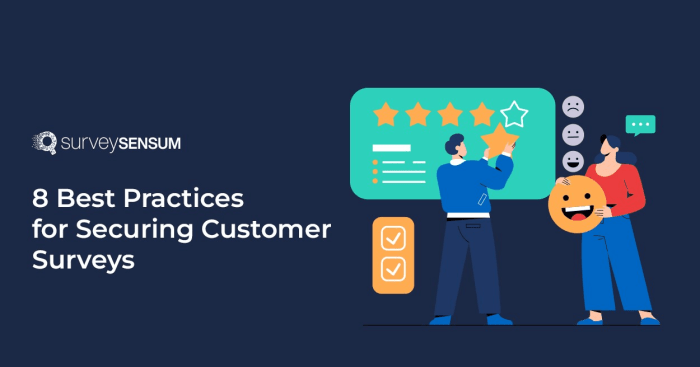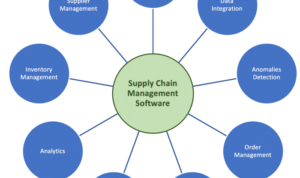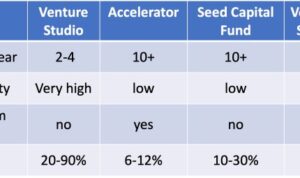Best Practices for Customer Surveys takes center stage in the business world, offering a glimpse into the art of gathering valuable feedback with style and finesse. Dive into the world of customer insights and survey mastery with this engaging guide.
Importance of Customer Surveys

Customer surveys are like the secret weapon in a business’s arsenal, helping them unlock valuable insights straight from the source – their customers. By gathering feedback directly from customers, businesses can tailor their products, services, and overall customer experience to meet and exceed expectations.
Enhancing Customer Satisfaction
- Customer surveys allow businesses to understand what their customers truly want and need, leading to the creation of products and services that align with customer preferences.
- By addressing issues highlighted in surveys, businesses can show customers that their feedback is valued, ultimately increasing customer satisfaction and loyalty.
- Regular surveys help in monitoring customer satisfaction levels over time, enabling businesses to make continuous improvements and retain happy customers.
Identifying Areas for Improvement
- Customer surveys provide businesses with actionable data on areas that need improvement, such as customer service, product quality, or pricing.
- Feedback from surveys can highlight pain points or bottlenecks in the customer journey, allowing businesses to streamline processes and enhance the overall customer experience.
- By analyzing survey responses, businesses can prioritize areas for improvement based on customer feedback, ensuring resources are allocated effectively.
Driving Innovation
- Customer surveys can spark new ideas for product development or service enhancements by uncovering unmet needs or emerging trends in the market.
- Feedback from surveys can inspire innovation within a business, leading to the creation of unique offerings that set them apart from competitors.
- Engaging customers in surveys can also foster a sense of community and collaboration, encouraging them to be active participants in shaping the brand’s future.
Designing Effective Surveys
When it comes to designing effective customer surveys, there are key elements that you need to consider in order to gather valuable insights. By focusing on the right aspects, you can create surveys that provide meaningful data to help improve your products or services.
One of the most important aspects of a well-designed survey is the clarity of the questions. Make sure that your questions are easy to understand and do not lead the respondent in any particular direction. This will help ensure that the answers you receive are genuine and unbiased.
Creating Clear and Concise Questions
- Keep your questions simple and to the point.
- Avoid using jargon or technical language that may confuse respondents.
- Use clear and specific language to avoid ambiguity.
- Avoid double-barreled questions that ask about multiple things at once.
Choosing the Right Survey Format
- Multiple Choice: This format is great for providing respondents with predefined options to choose from. It can help streamline the analysis process.
- Rating Scales: Rating scales allow respondents to provide feedback on a scale, providing quantitative data that is easy to analyze.
- Open-Ended Questions: These questions allow respondents to provide detailed feedback in their own words, offering valuable qualitative insights.
Encouraging Participation
To get more customers to participate in your surveys, you need to make it worth their while. Incentives and clear communication play a key role in boosting survey response rates.
Offering Incentives
- Provide discounts or coupons: Offering a discount on their next purchase or a coupon code can motivate customers to complete the survey.
- Enter them into a giveaway: Customers love the chance to win something, so consider entering survey participants into a prize draw.
- Offer freebies or samples: Providing a free product sample or a small gift can be a great incentive for customers to share their feedback.
Clear Communication
Communicating the importance of the survey and how their feedback will be used is crucial to encouraging participation. Make sure to:
- Explain the purpose: Clearly state why their feedback is valuable and how it will be used to improve products or services.
- Assure anonymity: Let customers know that their responses will remain confidential to encourage honest feedback.
- Set expectations: Inform customers about the length of the survey and how much time it will take to complete to manage their expectations.
Analyzing Survey Data: Best Practices For Customer Surveys

When it comes to analyzing customer survey data, it’s all about digging deep to uncover valuable insights that can drive business decisions. By effectively interpreting survey results, businesses can gain a better understanding of customer preferences, satisfaction levels, and areas for improvement.
Best Practices for Drawing Actionable Insights
- Segment Data: Break down survey responses by different demographics or customer segments to identify patterns or trends.
- Compare Results: Look for differences in responses between different survey waves or customer groups to pinpoint changes over time.
- Focus on Key Metrics: Pay attention to key performance indicators (KPIs) that directly impact customer satisfaction and loyalty.
- Utilize Data Visualization: Use charts, graphs, and other visual aids to present survey data in a clear and compelling way.
- Look for Correlations: Identify relationships between survey questions or variables to uncover underlying factors influencing customer perceptions.
Tools and Methods for Analysis, Best Practices for Customer Surveys
SurveyMonkey, Google Forms, and Qualtrics are popular online survey tools that offer built-in analytics features to help businesses analyze survey data efficiently.
Statistical analysis software like SPSS or R can provide more advanced analytical capabilities for interpreting survey results and conducting in-depth data analysis.
Text analytics tools can help businesses extract valuable insights from open-ended survey responses by analyzing sentiment, themes, and s.





